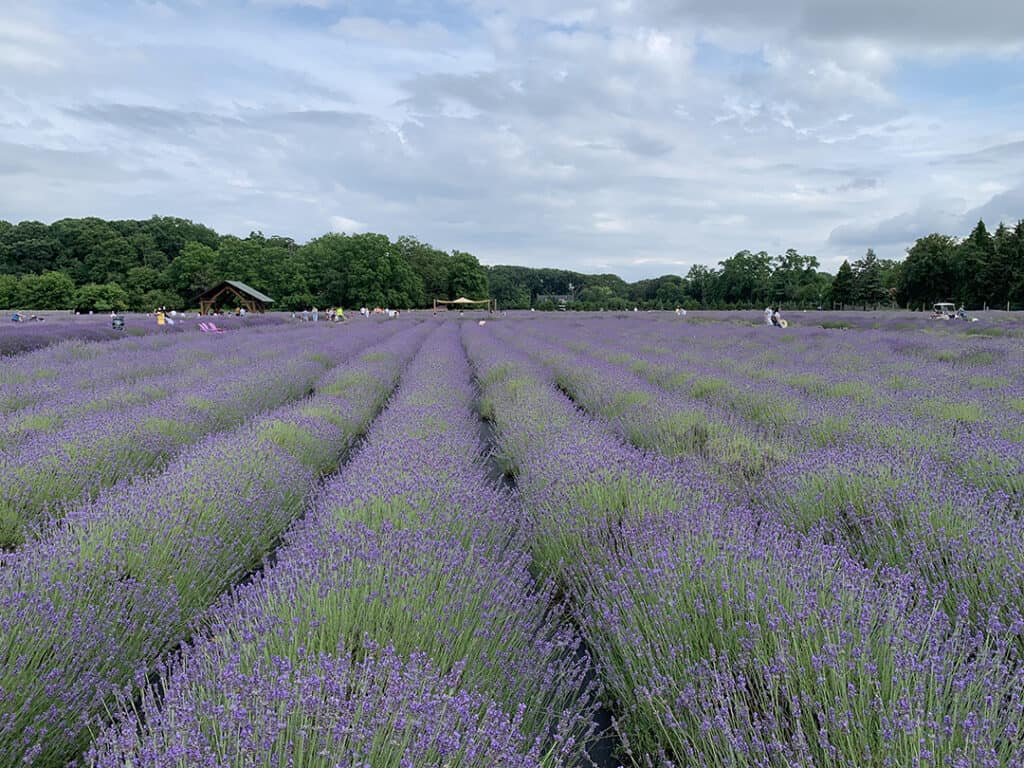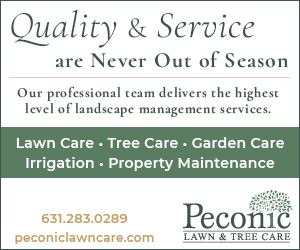Birds, Bees & Butterflies Help Sustain The Ecosystem
Birds, bees and butterflies all help pollinate the plants in our gardens, farms and wild places. You might be surprised to know that so do bats, beetles and small mammals. The heroes of our gardens, whose essential work mostly goes unrecognized, pollinators help plants reproduce, which helps sustain the ecosystem that in turn sustains us. They help plants to reproduce and continue the cycle of life, which helps sustain the ecosystems that in turn, sustain us.

If you have a flower garden, or if you visit one of the public gardens on the East End, in spring and summer you’ve probably seen bees, other insects, and butterflies perched on the flowers. They’re drinking the nectar which nourishes them, but in the process they pick up pollen from the flowers and spread it to other flowers, which in turn enables the plants to produce the fruits, vegetables and nuts that we eat. Pollinators are endangered now, and you can help support them.
If you have a garden – even if it’s only a bunch of plants in pots on your deck or patio – including some plants attractive to pollinators will help support their essential work…and our food supply. There is an official pollinator week each year. This year it’s June 20-26. If you want to learn more, visit the website of the Pollinator Partnership (www.pollinator.org/pollinator week) or the USDA (United States Department of Agriculture).
On your own property, if you see bees or other insects on the flowers in your landscape, leave them alone. If you have a garden, try to avoid spraying pesticides; if you must spray, target only plants begin attacked and harmed by pests. Don’t blanket-spray the entire garden.
Here are some plants to add to your garden to support pollinators:
Beebalm – a beautiful perennial flower, beebalm’s summertime flowers have colorful bracts in shades of pink, red, purple or white that bloom atop tall stems lined with pairs of aromatic green leaves (beebalm is in the mint family).
Black-eyed Susan is a summer classic in many East End gardens. Their flowers resemble daisies but they come in shades of orange-gold to bright golden yellow, with a prominent round center that’s dark brown in most varieties.

Purple coneflower, or echinacea, is similar to black-eyed Susan, but its flowers are somewhere between purple and pink and the center is bronze-brown.
Lavender is treasured for its intoxicating fresh fragrance. It’s heavenly planted in masses, in the garden or alongside a pathway. If you’ve never visited the Lavender by the Bay farm in East Marion on the North Fork, by all means go this summer.
Yarrow, a favorite in sunny perennial flower gardens, produces flat-topped clusters of tiny flower that bloom atop tall stems in summer and come in shades of bright gold, pale yellow, pink, red, white and burnt orange.













![Experience the epitome of coastal country living in this newly constructed, quality craftsmanship waterfront home on James Creek, leading to Peconic Bay. With 80± ft. of prime waterfront, 4060 Ole Jule Lane showcases thoughtfully landscaped grounds, a bluestone patio, outdoor shower, and a refreshing saltwater pool. Represented by @nataliealewis of @coldwellbanker. [link in bio]](https://hamptonsrealestateshowcase.com/wp-content/uploads/sb-instagram-feed-images/467188671_18474458155030135_7164624532118372206_nfull.webp)
![Welcome to 122 Mill Pond Lane, an impeccably conceived and meticulously maintained residence in a dramatic west-facing setting on Mill Pond. Throughout the home are thoughtfully considered elements that reinforce the home’s clean, modern sensibility. Represented by @kraelyllahamptons of @hamptonsrealestate. [link in bio]](https://hamptonsrealestateshowcase.com/wp-content/uploads/sb-instagram-feed-images/466787127_18474263443030135_2753720635361764689_nfull.webp)

![Perched atop the dunes at Louse Point sits 2 picturesque homes at 88 & 86 Louse Point Road, both perfect for enjoying all seasons that East Hampton has to offer. Each thoughtfully designed home maximizes the topography to allow seamless indoor/outdoor living and entertaining. Represented by @petrieteam of @compass. [link in bio]](https://hamptonsrealestateshowcase.com/wp-content/uploads/sb-instagram-feed-images/466619407_18473886082030135_7330054085188815713_nfull.jpg)
![Get cozy every Friday at Canoe Place Inn! 🍫🔥 Gather around the fire on our Garden Lawn for Fireside Fridays all season long, where evenings are warmed up with hot cider, hot chocolate, s’mores, and cocktails. Enjoy live acoustic music on select dates, and with your first drink, receive a complimentary s'mores kit! [link in bio]](https://hamptonsrealestateshowcase.com/wp-content/uploads/sb-instagram-feed-images/466374901_1761070534297706_6837753985329213061_nfull.jpg)
![Musical Superstar and Sag Harbor resident Billy Joel has listed his 26± acre Long Island estate for $50M. Assembled over time on adjoining parcels, the Centre Island compound features a 20,000± sq. ft. main home plus several additional structures—all with access to 2,000± ft. of private shoreline boasting a dock and a boat ramp. [link in bio]](https://hamptonsrealestateshowcase.com/wp-content/uploads/sb-instagram-feed-images/465973748_18473309701030135_6935355293028123088_nfull.jpg)
![51 Mashomuck Drive presents an exquisite estate spanning 1.1± acres with 145± ft. of bulk-headed waterfront. The main residence, offering captivating vistas of Sag Harbor Bay and Shelter Island, encompasses 7,800± sq. ft. of living space, boasting 7 beds, 9.5 baths, and a media room/gym area. This turn-key retreat embodies opulence and comfort, inviting a life of unparalleled luxury. Represented by @cindyascholtz and @jvonhagn of @compass. [link in bio]](https://hamptonsrealestateshowcase.com/wp-content/uploads/sb-instagram-feed-images/466104990_18473128246030135_2802294086252776198_nfull.jpg)
![In a prime East Hampton Village location, 64 West End Avenue is surrounded by preserved land and offers complete privacy situated on the shores of Georgica Pond with breathtaking sunset views. With both ocean and pond views, residents can indulge in swimming and sunbathing at the waterside gunite pool. Represented by @marthagundersenluxurybroker and @paulbrennanrealestate of @douglaselliman. [link in bio]](https://hamptonsrealestateshowcase.com/wp-content/uploads/sb-instagram-feed-images/465766544_18472922440030135_758297788107249653_nfull.jpg)
